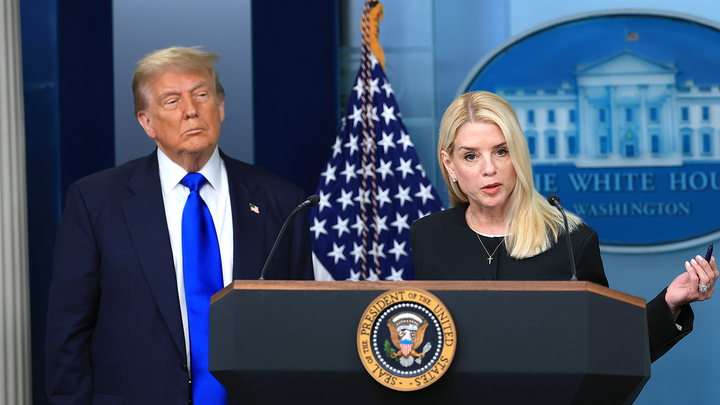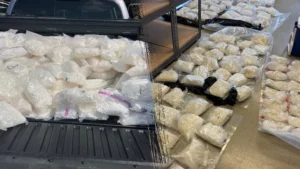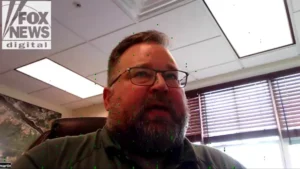Federal Agencies Launch Aggressive Crackdown on Synthetic Drug Networks Threatening Public Safety

A sweeping federal campaign is underway to dismantle powerful drug trafficking networks responsible for flooding communities with lethal synthetic opioids and methamphetamine. Officials warn these substances are driving overdose deaths to historic highs and threatening the nation’s public health and security.
Synthetic Drugs: A Deadly Wave
Among the greatest threats is fentanyl — a synthetic opioid so potent it has become the leading cause of death among Americans aged 18 to 45. Alongside it, illicit methamphetamine continues to spread rapidly, compounding the crisis.
Recent data estimates that over 80,000 people died from drug overdoses in the past year, with fentanyl and methamphetamine accounting for the vast majority of these tragedies.
A Complex Global Supply Chain
The production and distribution of these drugs involve sophisticated networks. Traffickers often source chemical precursors from abroad, manufacture synthetic drugs in concealed labs, and smuggle them across borders into the United States. The result is a steady flow of dangerous substances reaching neighborhoods across the country.

Coordinated Federal Response
Federal law enforcement has launched an extensive operation to disrupt these supply chains. Strategies include targeting major trafficking organizations, intercepting large shipments of illegal drugs, and prosecuting offenders to the fullest extent of the law.
Recent months have seen record seizures of synthetic opioids and methamphetamine, preventing millions of potentially fatal doses from reaching the public.
Major Seizures Highlight Scale of the Problem
Recent operations have intercepted significant quantities of synthetic drugs, including:
-
Hundreds of pounds of methamphetamine concealed in commercial vehicles.
-
Large quantities of counterfeit pills containing fentanyl.
-
Seizures of chemical precursors intended for synthetic drug production.
Officials emphasize that each seizure potentially saves countless lives.
Expanding Legal Tools and Penalties
In response to evolving trafficking tactics, federal prosecutors are deploying a range of legal tools:
-
Using organized crime statutes to dismantle entire networks.
-
Applying asset forfeiture laws to target the financial operations of traffickers.
-
Strengthening penalties for distribution resulting in serious harm or death.
In parallel, legislative measures have introduced stricter controls on emerging synthetic compounds, aiming to stay ahead of chemists producing new, unregulated variations.

International Cooperation and Sanctions
Beyond domestic enforcement, federal agencies are working with international partners to disrupt supply chains at their source. Diplomatic pressure and targeted sanctions are being used to hold foreign chemical suppliers accountable for contributing to the crisis.
Prevention Beyond Arrests
Officials note that enforcement is only part of the solution. Public education campaigns, community outreach, and treatment programs are critical to reducing demand and preventing future addiction.
Faces Behind the Numbers
At federal law enforcement offices, photos of overdose victims serve as a powerful reminder of why this effort matters. Each life lost reflects the human cost behind the statistics and reinforces the urgency of action.
Moving Forward: A National Priority
Federal agencies have pledged to keep pressure on trafficking networks, aiming to dismantle their operations and protect vulnerable communities. The strategy combines enforcement, prevention, and international cooperation to address the crisis on multiple fronts.
FAQs
Q: Why focus on synthetic opioids like fentanyl?
A: Fentanyl is significantly more potent than heroin or morphine, making even small quantities potentially lethal.
Q: What challenges do law enforcement face?
A: Sophisticated trafficking networks, evolving synthetic compounds, and high demand complicate enforcement efforts.
Q: Is there progress in reducing overdose deaths?
A: Some regions report slight declines, but the threat remains severe and ongoing.
Concluson
As synthetic drugs continue to endanger lives nationwide, federal agencies are intensifying efforts to disrupt trafficking networks, strengthen laws, and protect communities. Through a combination of enforcement, prevention, and international cooperation, officials aim to curb a crisis that has already claimed too many lives.




